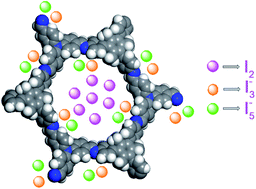Two-dimensional covalent–organic frameworks for ultrahigh iodine capture†
Abstract
Radioactive iodine in nuclear waste is increasingly harmful to nature with the continuous development and utilization of nuclear energy. Herein, two new two-dimensional covalent–organic frameworks (COFs, TJNU-201 and TJNU-202) were designed and synthesized by using sterically hindered 1,3,5-trimethyl-2,4,6-tris(4-aminophenyl)-benzene as a three-connected building block. Both COFs showed ultrahigh iodine capture capacity (5.625 g g−1 for TJNU-201 and 4.820 g g−1 for TJNU-202), which can be attributed to the physical–chemical adsorption.



 Please wait while we load your content...
Please wait while we load your content...